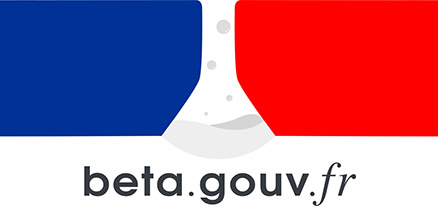








 Services
Blog
Français
Services
Blog
Français
This article describes how to use django.contrib.staticfiles as this is a FAQ StackOverflow and IRC.
The HTTP server is to serve static files directly from a public folder, without going through Django at all.
If the HTTP server configuration serves /srv/project/media_root/ on url /media_url/, for example with this nginx configuration:
location ^~ /media_url/ {
alias /srv/project/media_root/;
autoindex off;
}
Then:
settings.MEDIA_ROOT should be /srv/project/media_root/settings.MEDIA_URL should be /media_url//srv/project/media_root/ is managed by Django’s FileField and ImageField file system storage, you should not add files there by yourself.
In the same fashion, the HTTP server configuration serves /srv/project/static_root/ on url /static_url/, then:
settings.STATIC_ROOT should be /srv/project/static_root/,settings.STATIC_URL should be /static_url/.Also, /srv/project/static_root/ is managed by Django, and you should not add files there yourself. Don’t worry, we’ll see how to work with that a little further in this article.
External apps such as django.contrib.admin provide static files from their static/ subdirectory.
Take django/contrib/admin/static/admin/css/base.css for example, it is not in settings.STATIC_ROOT . So, the HTTP server cannot serve it as-is.
Django provides a management command that will copy the contents of the static/ subdirectory of each INSTALLED_APPS into STATIC_ROOT, making them available on STATIC_URL:
./manage.py collectstatic
For example, it will copy django/contrib/admin/static/admin/css/base.css to /srv/project/static_root/admin/css/base.css, making it available on url /static_url/admin/css/base.css
/srv/project/static_root/ is managed by Django, and you should not add files there yourself.
That’s why the collectstatic command actually does much more. It will also copy the contents of every directory in the settings.STATICFILES_DIRS into settings.STATIC_ROOT, making them available to settings.STATIC_URL.
To create your own style.css:
/srv/project/static_dir/,style.css in it, for example: /srv/project/static_dir/style.csssettings.STATICFILES_DIRS to /srv/project/static_dir/After you run collectstatic, /srv/project/static_dir/style.css will be copied into /srv/project/static_root/style.css, making it available in url /static_url/style.css.
Imagine that you want to override /static_url/admin/css/base.css. The first thing you have to do is find its location:
>>> ./manage.py findstatic admin/css/base.css
Found 'admin/css/base.css' here:
/home/jpic/env/lib/python2.7/site-packages/django/contrib/admin/static/admin/css/base.css
Then, copy it to your /srv/project/static_dir/, which you have added to settings.STATICFILES_DIRS (see previous paragraph), for example:
mkdir -p /srv/project/static_dir/admin/css/
cp /home/jpic/env/lib/python2.7/site-packages/django/contrib/admin/static/admin/css/base.css /srv/project/static_dir/admin/css
Your copy would reside in /srv/project/static_dir/admin/css/base.css. For collectstatic, /srv/project/static_dir/ has priority over django/contrib/admin/static, because of the default order of settings.STATICFILES_FINDERS.
So, collectstatic will get /srv/project/static_root/admin/css/base.css to be a copy of your override /srv/project/static_dir/admin/css/base.css, instead of the original django/contrib/admin/static/admin/css/base.css
Because settings.STATIC_URL can change, for example you decide to use a CDN, then you should not hard-code static urls like this:
<link rel="stylesheet" type="text/css" href="/static_url/style.css" />
Instead, it is better to use the template tag:
{% load static from staticfiles %}
<link rel="stylesheet" type="text/css" href="{% static "style.css" %}" />
When using the development server with DEBUG=True, it is not needed to run collectstatic because it would not be convenient. This is probably why you didn’t notice what was happening behind the scenes at all.
Read Never hardcode absolute paths.
Read, or over-read the documentation for django.contrib.staticfiles.








